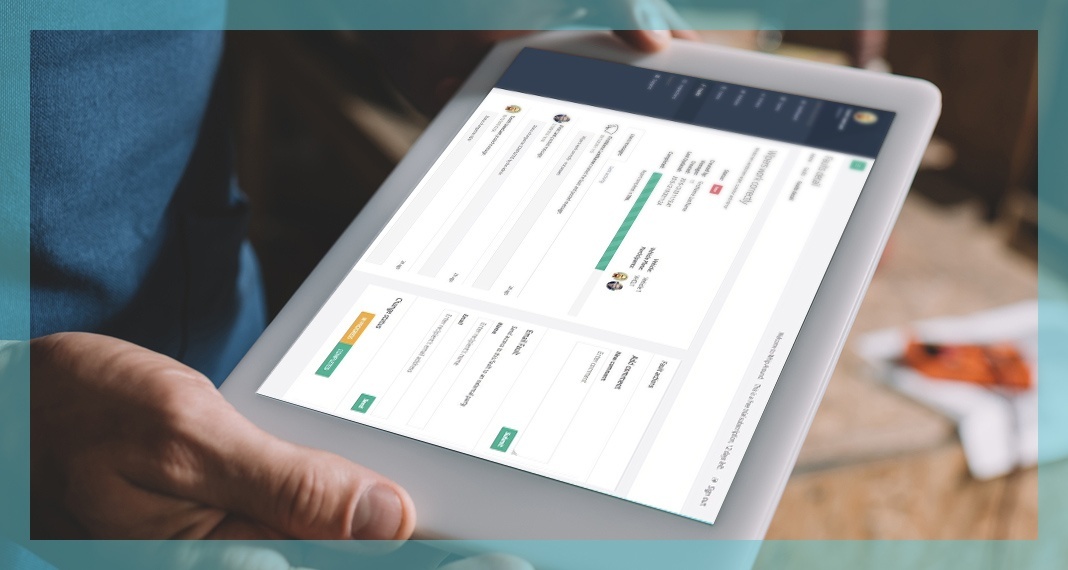It’s that pesky form you have to fill out before you go on a haul. For some truck drivers it’s the bane of their existence. In fact, some drivers will avoid it at all costs. It’s that frustrating, time-consuming task known as the Driver Vehicle Inspection Report (DVIR).
You may be wondering:
-
What is it?
-
What’s the big deal about them?
-
Can DVIRs benefit you, or are they just a government required nuisance?
-
How can you get them done faster?
We’ll cover all this and more in this post. Fasten your seatbelts, and let’s get this show on the road.
What is DVIR?
The DVIR is the formal record, be it on paper or paperless, that confirms a driver has thoroughly inspected their commercial motor vehicle before taking it on out on the road. According to the Federal Motor Carrier Safety Administration (FMCSA), completing a DVIR is required for each vehicle every day the vehicle is in use.
What the Big Deal About DVIR Anyway?
Why is it that some people like the Department of Transportation, your boss, fleet manager, etc…, get bent out of shape about whether or not you’ve done your DVIR before you drive your commercial vehicle? Perhaps it’s because the DVIR is what lets you know if your vehicle is road-ready.
By not completing it, you can’t be certain as to whether or not your vehicle is safe to be on the road. And the truth is, there are many things that can cause your commercial vehicle to be unsafe on the road. To put it bluntly, every time you go out without inspecting your vehicle for defects or faults, you are putting yourself and others at risk.
What Types of Things Should You be Checking for in Your DVIR?

At a minimum your DVIR should include inspection of the following parts and accessories:
(i) Windshield, windshield wiper, sun visor and mirror
-
Do the wipers work correctly?
-
Is the windshield clean and not cracked?
-
Are you confident the wiper blades are not damaged?
-
Is the washer fluid container full?
-
Is your windshield washer fluid operating correctly?
(ii) Lights and indicators
-
Are all lights work correctly including hazard lights?
-
What about the lenses? Are they clean, free from discoloration, and not cracked?
(iii) Left wheels and tires
-
Are your tires correctly inflated, and not damaged?
-
Are the wheel nuts on them tight?
-
Did you check that there are no cuts or bulges in the tire’s side walls?
-
Is your tread path adequate?
(iv) Are there any fluid leaks on the left side of the vehicle from the engine, fuel system, waste water tank or any other part?
(v) Reflectors, toe coupling, tail lights, indicators and air hoses
-
Are all of these fitted, working, clean and not damaged?
(vi) Are there any fluid leaks on the right side of the vehicle from the engine, fuel system, waste water tank or any other part?
(vii) Right wheels and tires – check for the same things you looked for on the left side tires:
-
Tires are correctly inflated and not damaged
-
Wheel nuts are tight
-
No cuts or bulges
-
Adequate tread path
(viii) Doors and seat belts
-
Do all doors open and close fully? Check the left side, right side and back doors. You also want to make sure all locks and latches work correctly too.
-
Is the fire extinguisher serviced and ready for use?
-
What about your seat belts? Are those working properly?
(ix) Horn and speedometer
-
Is the horn working correctly?
-
Is the speedometer is working properly?
(x) Additional things to check before heading off on a haul:
-
Do you have any trouble steering the vehicle?
-
Are there any apparent air leaks anywhere?
-
Does the vehicle come to a full and complete stop when you apply the brakes?
-
Are all switches and warnings operating adequately?
-
Do you have sufficient fuel to complete your trip?
Can DVIRs Actually Benefit You, or are They Just a Government Required Nuisance?

When it comes to DVIR’s, it can sometimes feel as though the paperwork you’re being required to complete is nothing more than a pain in the neck that government bureaucrats who don’t understand your job are enforcing just to give you a headache. You might even start to feel like they aren’t something that’s really necessary unless your boss forces you to do it. This can feel especially true if you have been driving regularly for months or even years at a time without an incident.
However, if you’re ever in a situation where your vehicle is not road-ready, and an incident does occur, you’ll instantly understand why doing the DVIR is so critical not just for yourself, but for the safety of everybody on the road. Of course, we hope you never have to experience the potential fallout of driving an unsafe vehicle. Still, we thought we’d share just a few things that could happen should you blow off this task that you might feel is simply a waste of your time.
You Could Wreck Your Vehicle, and be Found at Fault
Accidents happen everyday, and to be honest, not all of them, if any, will be your fault. Then again, there are many accidents that could have been prevented, and could cause you to be found at fault. Just a few examples where the truck driver could be found at fault for the accident include:
-
A brake failure that resulted in a wreck, because you didn’t notice that your brake fluid was leaking, and now your brakes have stopped working because the fluid ran dry. (A brake problem was even listed as one of the 10 most common causes of an accident when the commercial vehicle was determined to be at fault, according to Simmons and Fletcher, P.C.)
-
A fault in one of your tires led to a blow out, and you swerved into another lane as a result.
-
Your windshield had a small crack, that turned into a big one thanks to a bump in the road. It then impaired your vision, and caused a wreck.
-
You didn’t check the back latch on your vehicle, and while driving down the road at full speed, your entire haul flew out the back of the truck impaling several vehicles, and causing massive damage.
Think these incidents could never happen to you? Think again. Not only are they possible, they have happened, and caused hundreds of thousands of dollars worth of damage.
And, if you haven’t completed a DVIR, when the cops investigate the incident, you could:
-
Be found at fault
-
Get a fine
-
Lose your commercial driver’s license
-
Be sued (or your company could)
-
Be fired
In some cases, all of the above could happen as a result of an accident.
You Could Kill Someone or Yourself
You might believe it’s a little far-fetched to think that failure to complete a DVIR could result in a death. But, consider this – The FMCSA compiled a report called “Large Truck and Bus Crash Facts.” In the report they found, “There were 11.2 fatal large truck crashes per million people in the United States in 2015, a 6-percent increase from 2010.”
And, of those numbers they concluded: “Vehicle-related factors were coded for 6 percent of the large trucks involved in fatal crashes and 3 percent of the passenger vehicles involved in fatal crashes. ‘Other Working Vehicle’ and ‘Tires’ were the most common vehicle-related factors for large trucks in fatal crashes… ‘Tires’ was the most frequently coded vehicle-related factor for passenger vehicles in fatal crashes.”
While the odds are in your favor that you’ll never have to deal with a fatality as a result of an incident on the road, these numbers speak to the point that DVIRs are not just a waste of time. They are there to help you find small problems before they have the chance to become big ones.
What vehicle-related factors are you overlooking every time you skip a pre-trip inspection?
What are the Federal Regulations for DVIRs?
According to the Electronic Code of Federal Regulations, here are some of the rules as they are related to DVIRs:
-
Every motor carrier shall require its drivers to report, and every driver shall prepare a report in writing at the completion of each day’s work on each vehicle operated, except for intermodal equipment tendered by an intermodal equipment provider.
-
The report must identify the vehicle and list any defect or deficiency discovered by or reported to the driver which would affect the safety of operation of the vehicle or result in its mechanical breakdown.
-
The driver must sign the report.
-
Prior to requiring or permitting a driver to operate a vehicle, every motor carrier or its agent shall repair any defect or deficiency listed on the driver vehicle inspection report which would be likely to affect the safety of operation of the vehicle.
-
Every motor carrier shall maintain the original driver vehicle inspection report, the certification of repairs, and the certification of the driver’s review for three months from the date the written report was prepared.
If you drive a commercial vehicle, you should be completing DVIRs. And, if your company is not enforcing this, your vehicle is not in compliance with federal regulations. This could result in fines, lost wages, and other inconveniences for you and/or your company.
How Can Completing Your DVIRs Benefit You or Your Company?
Being compliant with federal regulations can keep your truck on the road. Every day that your vehicle isn’t on the road can cost as much as $1,000 or more. In other words, completing your DVIR could save your day’s wages.
For example. if you’re pulled over for a roadside inspection and have not completed a DVIR, it could lead to a more thorough inspection by the DOT. If they find any faults your truck could be taken off the road until the repairs can be made. The longer those repairs take, the longer you are losing money.
Another benefit of completing DVIRs is that your company will save money. Every time they learn of a problem with a vehicle, it will be repaired and get back on the road that much faster. Smaller problems cost less time and money to fix, and this will give your company’s bottom line a boost. That makes for happier bosses and managers, and ultimately happier employees.
When companies enforce completion of DVIRs they can also save money on insurance premiums. Having those DVIRs in hand is auditable proof to an insurance provider that the vehicles in a fleet are being maintained, and are as safe as they can be on the road.
How Can You Complete a DVIR Faster?

Perhaps by now we have finally convinced you that you should be doing DVIRs regularly. Great! But, now you’re trying to figure out how to get them done faster. We get it! Time is money, and completing a DVIR takes time. And, if you’re using a paper based system, you’re wasting a lot more time and resources than necessary. All that ink, all those copies, all that paperwork…it’s unnecessary.
Enter Whip Around. Founded in January 2015, Whip Around is a mobile-based application that makes DVIR compliance quick and easy. Using a mobile device, you can simply pull up a pre-trip inspection form, fill it out with a few clicks, and then instantly submit it to your fleet manager. You can even report defects and faulty equipment within the platform, and you’ll be prompted to take a photo and add a comment to explain the issue.
The basic report installed with the application comes with the bare essentials of what you need to inspect a vehicle to be road ready. However, your fleet manager can also add their own inspection items to it in order to ensure everything is in tip-top shape before drivers go out on the road.
Once a DVIR is submitted, your fleet manager can assign the vehicle for repairs. Or, if everything checks out, you can hop on the road confident that your vehicle is safe. No paper, no hassle, just quick inspections, and instant submission. Being compliant with DVIRs has never been easier.
Get Started With Whip Around Today
Want to try out Whip Around for yourself? You can get started with a freemium account as soon as today. Click here to learn more about Whip Around’s features, or click here to create an account now.









